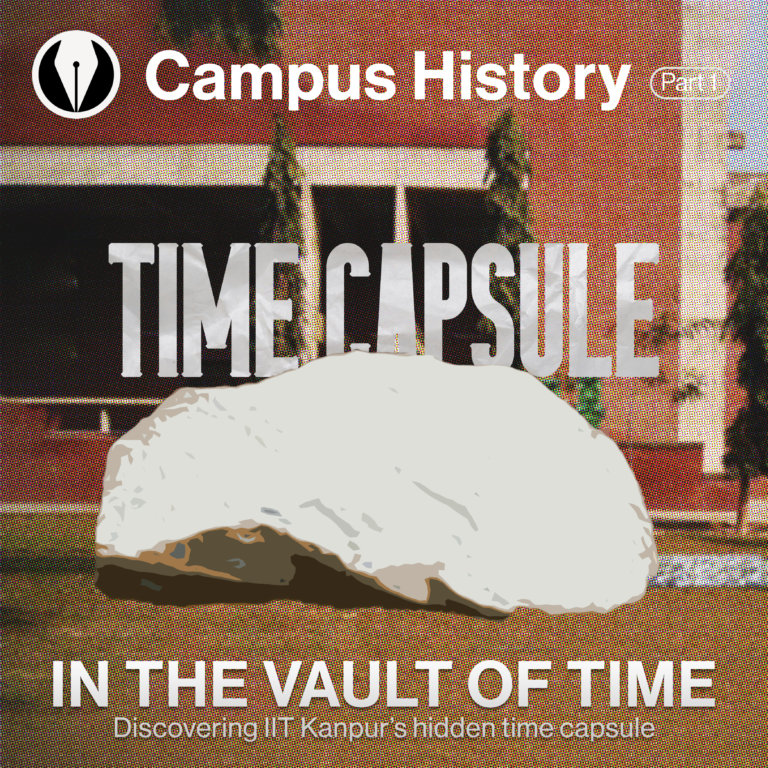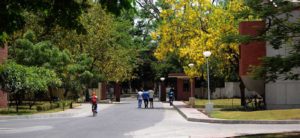If you might venture into the -1 from the lift of the library, you don’t notice anything eerie, do you? There, my friend, you are mistaken :-P! With more than 28 thousand books in our library (now that’s a LOT) and anywhere between 40 to 150 books being added to this collection every Monday, have you wondered where they finally end up? We follow the journey of the book from the shelf to its doom!
Binding Section
Ever noticed the binding section on the second floor? That’s where the damaged and old books go for a nice restoration.
The office is responsible for sending books and journals for binding. The binding earlier used to be done in the library’s basement itself, but is now outsourced to vendors on campus. There was a time monthly journals were just essential, but now we all have digital copies of them. Earlier, monthly journals were bounded in sets of 12. “Currently, only the remaining old journals and decaying books are sent for binding,” said a staff member at the binding section. When a book isn’t requested for more than several years, it’s time to say goodbye! Such books are bound and sent to the basement for the years to come.
The Basement – Where Future meets the Past
The mysterious and silent basement is a fascinating place to visit. As you slide the grill of the lift and venture into the basement, you see the unexpected:

Tall and unending lines of racks, which look like gold vaults, straight outta some Hollywood movie, huh? Now, this is what we call the Compactor Sirjee! And for a good reason! In 2015, P.K. Kelkar library installed this expensive set up in the basement, the Compactor enables the library to store old books in an extremely space-effective manner. It was introduced due to the space crunch in the library. It has huge movable shelves, placed close to each other, to maximize storage space.
If you rotate the wheel like Captain Jack sparrow you’ll see that the shelves shift along the rails. You can then slip into the gap and find your book. Otherwise, the shelves stay close together, letting you fit a stupendous amount of books in there. The Compactor has 151 such racks, each numbered and organized by call numbers(more on that later) so that it can be accessed readily. Books that were unused since 2009 were shifted to the Compactor in 2015, to make space for newer books and study spaces. And by the way, remember the studying area on the second-floor corridor you see today? That was all filled with racks before 2015.
Who told the Compactor was the only surprise in the basement? The basement also hosts the Archive section. The Archive section does what it’s called—it preserves all things old and tattered. It hosts a High-speed Overhead Book Scanner that brings us from the past to the present. This high-tech scanner is used in the archive section to preserve old books, documents, and journals by digitizing them. Currently, it is being used to digitize records of former employees.

The archive section also houses framed and unframed pictures and C.D.s (containing videos) of Institute events like Convocation, Golden Jubilee Celebration, among others.
In the archive section is a huge framed picture of Prof. P.K. Kelkar laying the foundation stone for the institute, a memorable moment in the history of our institute!

“The basement used to house the printing section, binding section, and the graphics card section,” he recalls. You ask what graphic cards are? Before the online system, the circulation of books was tracked by using an intricate system of graphic cards. You can see those near the stairs on the second floor, even to this day.

Remember the closed grilled gate in the library building visible from the side of the Faculty Building? It opens up into the basement, in front of the archive section. This gate was used to move books and machinery in and out of the library in the past.

But what happens to the books after they are kept in the Compactor? Books are immortal, just as knowledge is. You’ll find 50 years’ old copies of Economic Times in the library. But books do gradually fall into oblivion. They remain in the Compactor for a long time, but eventually, everything returns to dust.
At this time, it is fascinating to ask- Why are these books still there? Does someone care to read Newton’s original thesis when much more refined interpretations of the same exist? Why does the library put in so much effort and space in storing books that are decades and centuries old? We’ll leave it for you to think! We meet soon in the upcoming “Present” and “Past” articles.
Cheers!
Written by: Abhimanyu Sethia, Astha Pant
Edited by: Hemant Kejriwal














